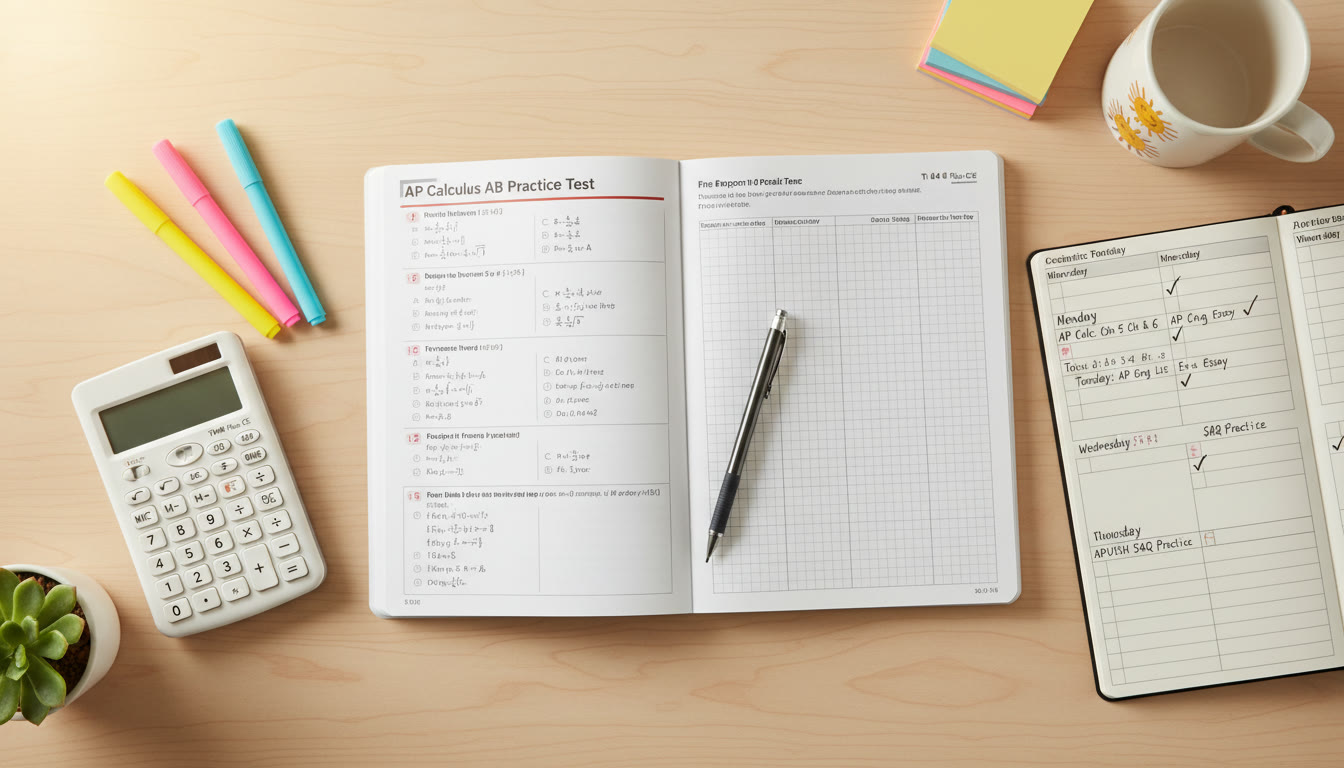Why Planning for AP Retakes Matters (And Why You’re Not Alone)
Watching your child finish an AP course and then hesitating at the idea of retaking the exam can stir a mix of emotions — disappointment, determination, and a deep desire to do right by them. For many families, the thought of paying for another test administration while also juggling other school expenses prompts the question: should we budget for a retake now, or wait and see?
There’s a comforting truth: retakes are common and often smart. Students grow, teachers refine focus between school and exam expectations, and targeted study can turn a 3 into a 4 or a 4 into a 5. The key is approaching retakes strategically — and that’s where budgeting helps. This guide walks you through practical steps to estimate, save, prioritize, and get the most value from every dollar spent, including how Sparkl’s personalized tutoring can fit naturally into your plan.
Step 1 — Get a Clear Picture: Costs to Expect
Before building a budget, you’ll want to know the direct and indirect costs associated with a retake. Direct costs are straightforward: AP exam registration fees and any late or school-specific charges. Indirect costs include prep materials, tutoring, transportation to test sites, and the emotional time investment of both student and parent.
Typical Cost Categories
- College Board AP exam fee (varies by year and location)
- School or proctoring fees (some schools handle registration differently)
- Prep books and practice tests
- One-on-one or group tutoring sessions
- Transportation and potentially childcare for younger siblings on test day
- Opportunity costs (time away from other activities or paid work)
Rather than guessing, start by asking your school’s AP coordinator for the exact registration fee and timeline. This gives you the hard number to plug into your plan.

Step 2 — Estimate How Much You’ll Need: A Sample Budget Table
Below is an example budget that will help you visualize common expenses for planning one AP retake. Adjust the numbers to reflect your local exam fee and tutoring rates.
| Expense | Low Estimate | High Estimate | Notes |
|---|---|---|---|
| AP Exam Registration | $100 | $160 | Varies by year and state—confirm with school |
| Prep Books/Practice Tests | $25 | $80 | One or two targeted resources often enough |
| One-on-One Tutoring (5–10 sessions) | $250 | $1,000 | Depends on tutor expertise and session length |
| Group Classes or Workshops | $75 | $300 | Short, focused bootcamps can be cost-effective |
| Transportation / Misc | $10 | $40 | Fuel, parking, snacks |
| Total (Per Retake) | $460 | $1,580 |
This range is broad because family circumstances differ — some teens need only a focused two-week review and a practice test, while others benefit from an extended tutoring plan. If multiple children are retaking exams, multiply accordingly and consider discounts for bulk tutoring or group lessons.
Step 3 — Prioritize Where to Spend (And Where to Save)
Not every dollar is equally effective. Prioritize spending on interventions with the highest return for your child’s situation.
High-Impact Investments
- Targeted Tutoring: When a student needs to fix specific weak spots, a few focused 1-on-1 sessions can produce big score jumps. Sparkl’s personalized tutoring, for example, pairs students with expert tutors who create tailored study plans and use AI-driven insights to track progress — a practical choice for focused improvement.
- Official Practice Exams: Full-length, timed practice exams are priceless for building exam stamina and revealing content gaps.
- Quality Review Materials: A concise, well-structured review book beats a pile of random worksheets.
Smarter Ways to Save
- Group Review Sessions: If the student already has a solid foundation, cost-sharing a small group class can be efficient.
- Use Free Resources Strategically: College Board released practice questions and scoring guidelines are helpful — pair them with focused tutoring rather than relying on free resources alone.
- Ask About School Supports: Many schools offer after-school review sessions or teacher office hours at no additional cost.
Step 4 — Build a Family-Friendly Savings Plan
Create a simple savings plan that matches your family’s cash flow. It doesn’t need to be elaborate — consistency wins.
Three Practical Savings Approaches
- Monthly Micro-Savings: Divide the estimated cost by the number of months until the next retake window. For example, if you need $600 and have six months, save $100/month.
- Priority Jar: Keep a visible “AP Retake” envelope or digital sub-account where extra babysitting earnings, tax refunds, or birthday money can go. Seeing the jar grow helps kids feel invested.
- Emergency Buffer: Set aside an extra 10–15% for unexpected fees or a last-minute tutoring boost if a practice test shows a troubling weakness.
Step 5 — Decide Which Exams to Retake (If You Can’t Afford Them All)
If budget limits mean only some exams can be retaken, weigh the costs against expected benefits. Not every AP retake is equally valuable.
How to Prioritize
- College Goals: If a particular AP score directly influences an intended major or fulfills a college credit requirement, prioritize that subject.
- Score Trajectory: Look at practice exam trends. Small, consistent gains in a subject may suggest a high chance of improving on test day.
- Teacher Feedback: Talk to the AP teacher. Their perspective on whether a score jump is realistic after targeted study is invaluable.
Example: If your teen scored a 3 in AP Calculus and plans to major in engineering, retaking Calculus likely deserves higher priority than retaking an AP Art History exam where a 3 already demonstrates meaningful academic strength.
Step 6 — Create a Study-and-Budget Calendar
Pair your financial plan with a study calendar. This ties money decisions to measurable study milestones — and makes coaching choices evidence-based rather than emotional.
- Set a target retake date and work backward.
- Schedule practice exams at regular intervals (e.g., every 4–6 weeks).
- Allocate tutoring sessions to follow practice test results — more sessions for stubborn weak areas, fewer for consolidation.
By linking tutoring purchases to practice test performance, you reduce wasted sessions and make every dollar count.
Step 7 — Maximize Test-Day Efficiency
Test-day expenses are small but avoidable: gas, parking, snacks, and stress-related items. Plan these so they don’t surprise you. Prepare a checklist for the morning of the exam — admissions ticket (or confirmation), acceptable calculator, pencils, photo ID, water, and a light snack.
Cost-Saving Test-Day Tips
- Carpool with a friend to split driving costs.
- Bring homemade snacks rather than buying on-site.
- Confirm parking logistics ahead of time to avoid fines or need for alternative transportation.
Step 8 — When Tutoring Makes Sense (And How to Choose It)
Tutoring is a common sticking point in budgets because it’s the single largest variable expense. The question isn’t whether tutoring is good — it often is — but whether it’s the right kind for your child.
Good Fit: When to Invest in Tutoring
- The student struggles with specific concepts despite classroom instruction.
- Practice tests show consistent gaps in particular question types.
- Motivation is inconsistent and a coach would provide accountability.
What to Look For in a Tutor
- Experience with AP exams and scoring standards.
- Ability to create a tailored study plan — not a one-size-fits-all script.
- Clear, regular progress reporting so you know what’s working.
Sparkl’s personalized tutoring model often fits these criteria: expert tutors, tailored study plans, and AI-driven progress tracking that can highlight where sessions produce the most improvement. If budgeting for tutoring, look for flexible packages that let you scale up or down depending on practice test results.
Step 9 — Track Return on Investment (ROI)
Think of your retake budget as an investment in the student’s future. Tracking ROI prevents sunk-cost decisions and helps you decide whether to continue, pause, or shift strategies.
Simple ROI Metrics
- Score improvement on practice exams per tutoring hour.
- The cost per expected point increase (total tutoring cost divided by expected score gain).
- College credit potential — some campuses grant credit for scores of 4 or 5, which may reduce future tuition costs.
Keep short notes after each practice test: what worked, what didn’t, and how many tutoring hours were used. Over time you’ll see which investments produce reliable gains.
Step 10 — Emotional and Practical Support: Part of the Budget Too
Retakes are emotional for students. Budgeting for check-ins, short rewards, or low-cost stress-relief activities pays dividends in focus and persistence. Consider setting aside a small amount in the budget for a celebratory meal after the test or a quiet afternoon off — inexpensive, but meaningful.
Practical Supports to Include
- Regular family check-ins and encouragement
- Quiet study spaces and reliable supplies
- Access to counseling or school support if anxiety interferes
Real-World Example: How a Family Turned $700 Into a Higher Score
Meet the Tran family. Their junior, Maya, scored a 3 on AP Chemistry in May. The family had a modest budget and decided to treat the retake like a targeted project.
- They confirmed the AP fee with the school: $150.
- Maya took two full-length practice tests spaced six weeks apart (free past exams plus a $30 scored practice test).
- Based on her practice tests, they purchased four targeted tutoring sessions focused on thermodynamics and reaction kinetics; they used an online tutoring service offering flexible, expert sessions for $75/session.
- They invested in one high-quality review guide ($35) and created a simple study calendar.
Total cost: approximately $485. The result: Maya’s understanding deepened, her practice scores rose from the low 50s to the high 70s, and she earned a 4 on the retake. Those four tutoring sessions were the highest-leverage items — targeted, timely, and aligned with practice-test feedback.
Quick Checklist to Get Started Tonight
- Ask your AP coordinator for the exact registration fee and retake window.
- Run one full-length practice test to identify the biggest gaps.
- Decide if tutoring is needed — use practice test results as the trigger.
- Create a small savings target and timeline (e.g., $100/month for six months).
- Mark practice-test dates on a shared family calendar.

Frequently Asked Questions Parents Ask
Is it worth retaking an AP exam for one point?
Often yes — especially if that point moves the score from a 3 to a 4 or 4 to 5 and the student’s intended colleges or major recognize AP credit or placement at those thresholds. But it depends on the family’s priorities and the time and resources available. Use practice test trends to inform the decision.
How many hours of tutoring usually helps?
There’s no one-size-fits-all number. Some students see large improvements after 3–6 focused sessions addressing key weaknesses, while others benefit from longer engagement. The important thing is tutoring that targets diagnostic weaknesses revealed by practice tests and tracks measurable progress.
Can we reduce test costs in any way?
Many schools handle registration centrally and sometimes provide fee waivers or subsidies for eligible students. Ask your school’s counselor or AP coordinator about fee assistance programs if cost is a barrier.
Final Thoughts: Budgeting With Empathy and Strategy
Budgeting for AP retakes isn’t only about dollars — it’s about aligning family priorities, reducing stress, and giving your teen the tools they need to succeed. With a clear estimate of costs, a prioritized spending plan, and a study calendar tied to measurable milestones, you turn an uncertain decision into a concrete project.
Remember: a small, targeted investment done at the right time often produces outsized results. Whether that’s a few strategic tutoring sessions with a coach who understands AP scoring, purchasing official practice tests, or simply creating a consistent study schedule at home — your thoughtful planning will make a difference. If you’re considering personalized tutoring, options like Sparkl’s one-on-one guidance and tailored study plans can make it easier to get focused help without paying for more than you need.
Take a breath, make a plan, and involve your teen in the decisions — they’re more likely to follow through when they help design the roadmap. Budgeting for a retake is not just financial preparation; it’s an act of faith in their growth.
Want a quick template?
Start with the sample table above, plug in your school’s exam fee, add a few tutoring session estimates, and divide the total by the months remaining. Reassess after the first practice test — if results are promising, keep going; if not, pivot your study strategy before increasing the budget.
Parents, you don’t have to navigate this alone. Small, smart choices now can open doors later — for college credit, confidence, and academic momentum. Your teen’s next score might be the one that changes their plans — and your thoughtful budgeting will have helped make it possible.
























No Comments
Leave a comment Cancel